Nam Giao Esplanade
Emperors under feudalism often regarded themselves as "thien tu" - the sons of God. Hence, to express their respect to Father God, they often held annual offering ceremonies to worship. That's why Nam Giao Esplanade was built by King Gia Long after being crowned, in Duong Xuan Village, south of Hue City.
- Location and History
- Nam Giao Esplanade was established by King Gia Long after his coronation in Duong Xuan Village, located south of Hue City. Construction began on March 25, 1806, and by early 1807, its inaugural worship ceremonies were conducted. Among the numerous offering terraces built by previous dynasties, the Nguyen dynasty's structure is the only one that remains intact today.
- Architecture
- How To Get There
- Best Time To Visit
- Useful Information
Location and History
Nam Giao Esplanade was established by King Gia Long after his coronation in Duong Xuan Village, located south of Hue City. Construction began on March 25, 1806, and by early 1807, its inaugural worship ceremonies were conducted. Among the numerous offering terraces built by previous dynasties, the Nguyen dynasty's structure is the only one that remains intact today.
Architecture
The open-air monument represents an ancient worldview, reflecting the belief in a circular heaven and a square earth. It is designed based on the principles of Yin and Yang and embodies the five elements of nature: Metal, Wood, Water, Fire, and Earth (in Vietnamese: Kim, Moc, Thuy, Hoa, Tho).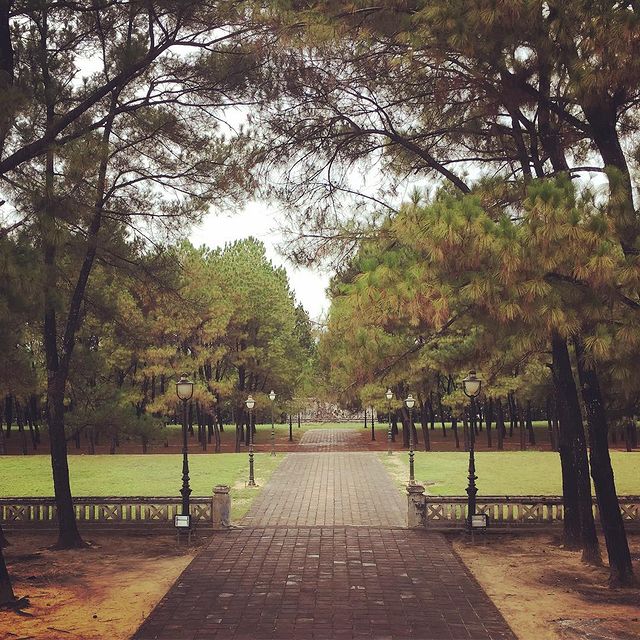 Photo by @runingawayfromhome
Photo by @runingawayfromhome
The esplanade also symbolizes the traditional East Asian theory of the three agents: Heaven, Earth, and Man (Thien, Dia, Nhan). Each element is represented by a different terrace with unique colors and shapes: the circular blue heaven, the square yellow earth, and the bottom red-painted square terrace representing Man. This terrace is colloquially referred to as “red child” (xich tu – con do), indicative of common people. The top terrace (Heaven) hosts offerings to the deities, Earth, and the ancestors of the Nguyen Dynasty, and is known as Vien dan. The middle terrace (Tung dan) is dedicated to worshipping celestial bodies and natural forces, including the Sun, Moon, Stars, Clouds, Rain, and various holy spirits recognized throughout Vietnam. The final terrace is the site for sacrifices.
In addition to the main esplanade, several auxiliary structures support the rituals, including the “Trai cung” (where the king resides before ceremonies), “Than tru” (the kitchen for sacrificial preparations), and “Than kho” (the storage for ceremonial tools).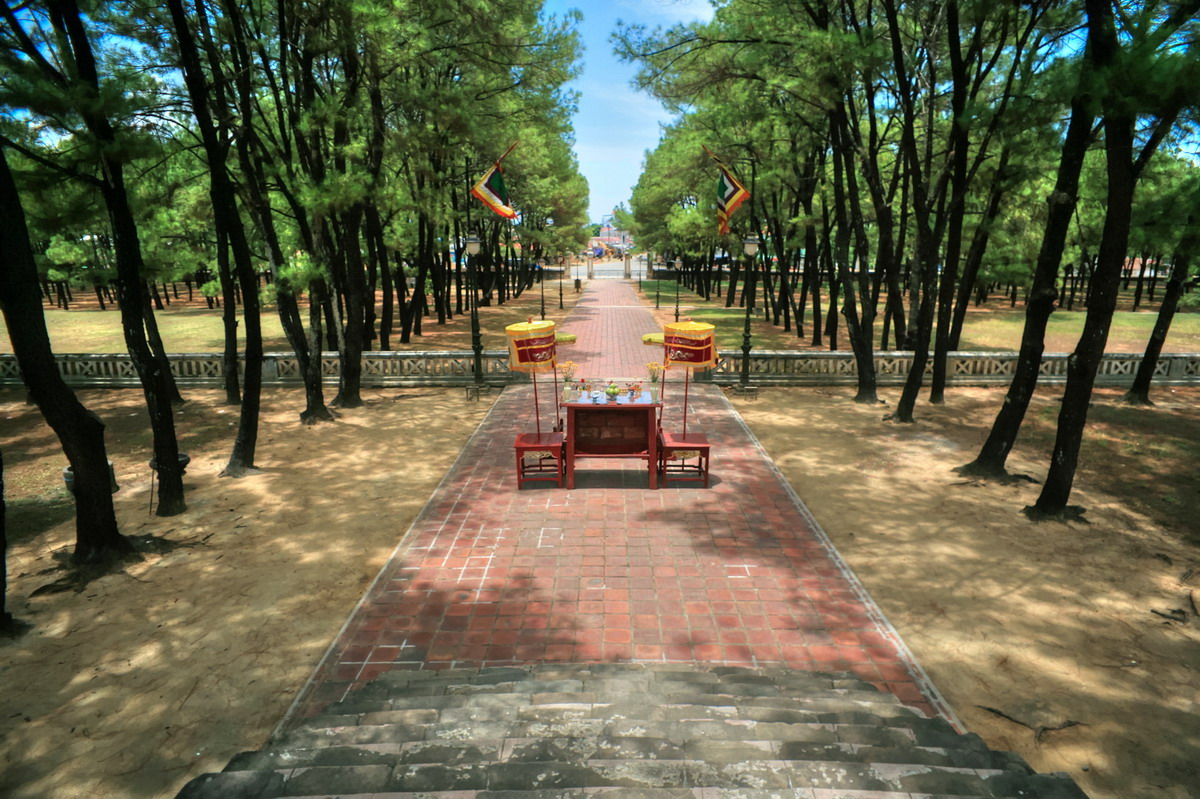 Photo: dulichhue.biz
Photo: dulichhue.biz
Historically, Nam Giao Esplanade was encircled by a robust basalt wall, now largely in ruins. Pine trees were planted throughout the area, with Emperor Minh Mang continuing his father's tradition by inviting his sons and mandarins to plant and tend to their own pines alongside personal name cards.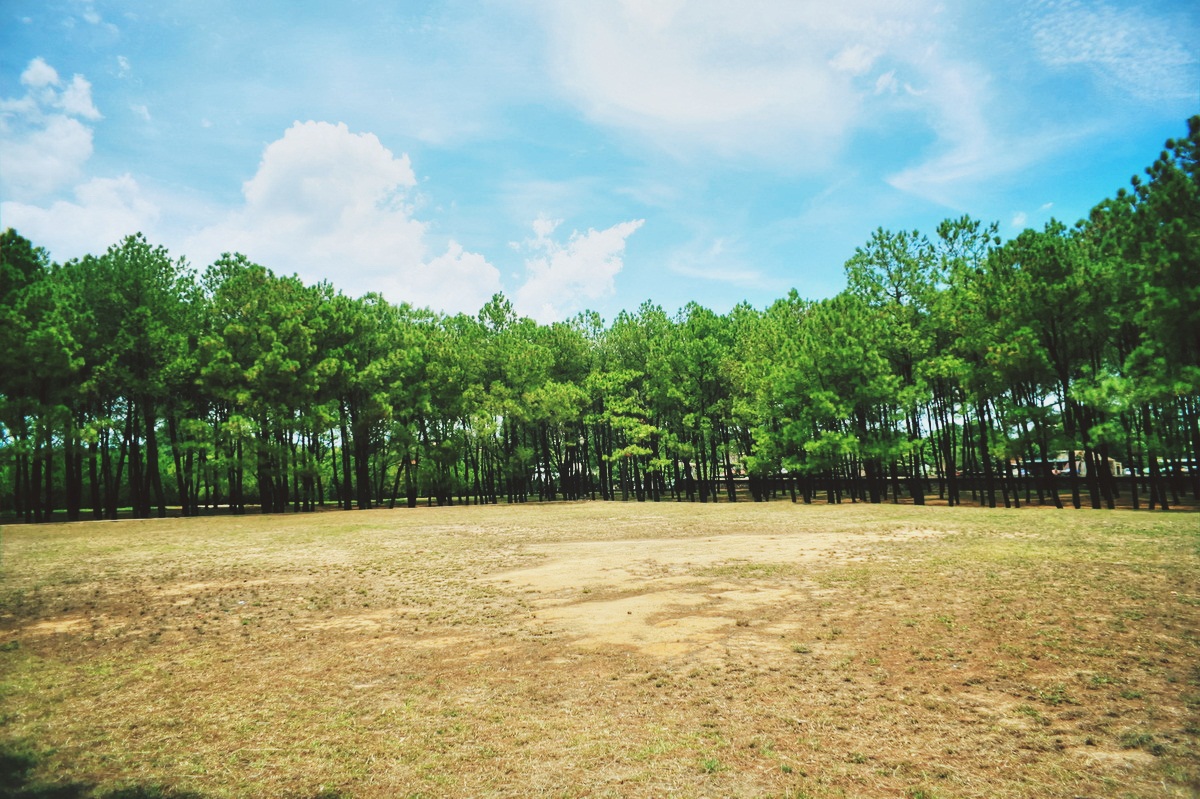 Photo: dulichhue.biz
Photo: dulichhue.biz
The esplanade holds significant religious and political importance within the Nguyen Dynasty. It required extensive preparation from the Protocol and Administration Ministries, with local villages and communities tasked with erecting triumphal arches along the Emperor's route from the Ngo Mon Noon Gate to Trai Cung. During ceremonies, colorful flags were displayed at the four entrances of the esplanade: black on the north, blue on the east, red on the south, and white on the west. Generally, the king personally presided over the ceremony, though if he was unable, a son or appointed mandarin would step in.
Today, visitors can explore Nam Giao Esplanade to gain insight into the religious and political beliefs of the Oriental feudal society, particularly during the Nguyen Dynasty, which contrasts starkly with Western perspectives.
How To Get There
To find the esplanade, follow Dien Bien Phu Street until the end. Suitable modes of transport include bicycles, motorbikes, and cars.
Best Time To Visit
The site welcomes visitors year-round, but the most enriching experience is during ceremonial events. The royal ceremonies are commonly revived during the Hue Festival, celebrating peace and prosperity. Since the last festival in 2022, the next Hue Festival is anticipated to be in April 2026, promise an extraordinary experience for attendees.
Useful Information
- Location: Đàn Nam Giao, Huế
- Best for: Family, couple, solo
- Entrance: Free
- Hours: 8:00AM - 5:00PM
- Distance to city center: 3.0km (1.9 mi)
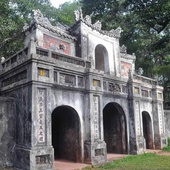
Tu Hieu Pagoda
In Hue - one of Vietnam's most sacred lands of Buddhism, Tu Hieu is regarded as the largest and oldest pagoda, and also a famous sightseeing spot with historical and cultural value.
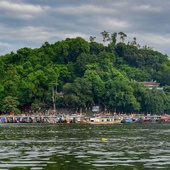
Hon Chen Temple
Hon Chen Temple is situated on a lovely slope of Ngoc Tran Mountain, 10km upstream from Hue Centre. The name “Ngoc Tran'' means Pearl Bowl, originating from the bowl-shape of the mountain. That also gives the temple its name: Hon Chen.
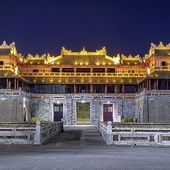
Hue Imperial Citadel
Famously being one of Vietnam’s seven UNESCO World Heritage Sites, the Imperial City of Hue has long been a must-see attraction for tourists visiting a hidden charm of Vietnam.








